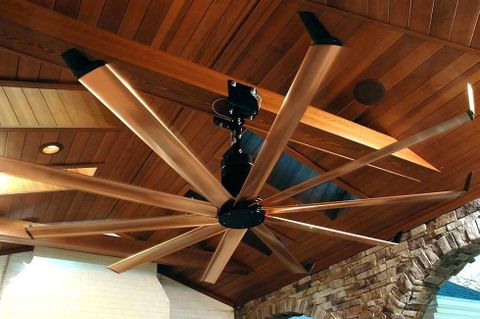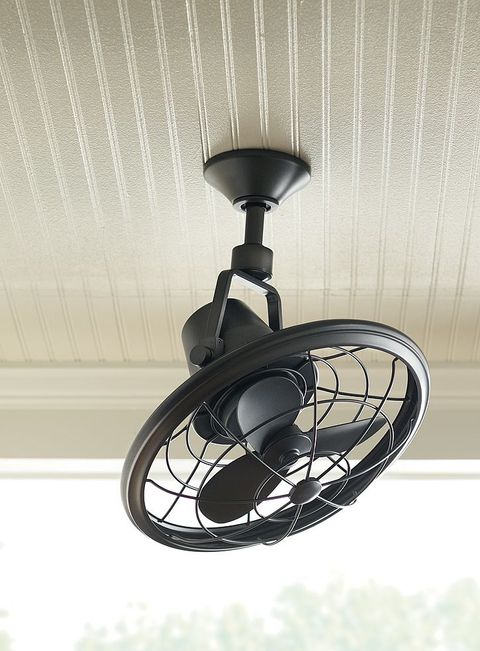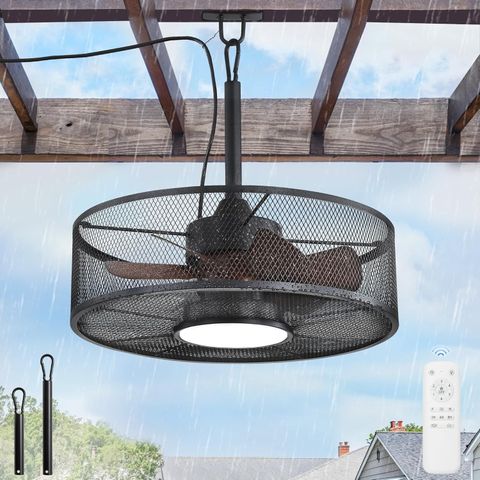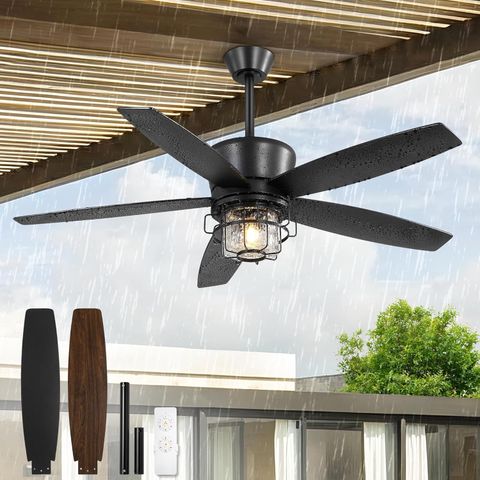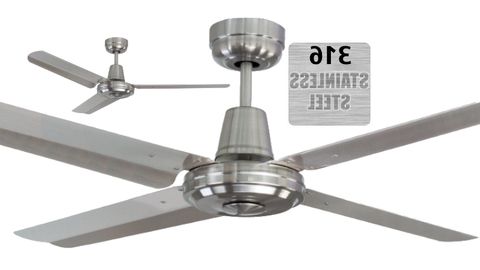When you think about adding a ceiling fan to your veranda, it’s easy to focus solely on function. But what if your fan could also become part of the architectural story your space tells? The right outdoor ceiling fan doesn’t just provide breeze—it enhances the visual appeal of your veranda. It becomes a design element that complements rather than competes with your existing aesthetic.
Verandas are more than just covered outdoor spaces—they’re extensions of your living area that blur the lines between indoors and outdoors. When you add a ceiling fan to this environment, you’re not just adding functionality; you’re making a design statement. The challenge lies in finding that perfect balance where your fan feels like it belongs rather than standing out as an afterthought. This isn’t just about matching colors or shapes—it’s about understanding how outdoor fans can enhance your veranda’s unique character while providing the cooling comfort you crave.
Understanding Veranda Architecture
Before diving into fan selection, it’s crucial to understand what makes your veranda unique. Every veranda has its own architectural personality—whether it’s traditional colonial charm, modern minimalist appeal, or rustic countryside vibes. Consider the overall style, materials used, and existing design elements. For instance, a colonial-style veranda might benefit from ornate wooden blades or classic finishes, while a contemporary space might prefer sleek metal or glass components.
The structural elements matter too. Are there columns, beams, or decorative brackets that influence how you position your fan? What’s the ceiling height and what’s the typical traffic pattern in your space? These details help determine not just where to place your fan, but what kind of fan will work best.
Material Selection for Durability and Style
Outdoor fans face harsh conditions—sun, rain, humidity, and temperature changes. The materials you choose must withstand these elements without compromising aesthetics. Aluminum and stainless steel offer excellent weather resistance while maintaining clean lines. Wood blades bring warmth and natural beauty, though they require more maintenance. Fiberglass provides a good middle ground, offering durability and a range of finish options.
Consider how materials interact with your veranda’s color palette. A brushed bronze finish might complement a stone veranda beautifully, while brushed nickel or chrome works well with modern concrete or tile designs. The material choice affects both longevity and visual harmony.
Blade Design and Size Matters
Not all blade designs are created equal when it comes to outdoor spaces. Blade size directly impacts airflow efficiency, but it also creates visual impact. Large blades create dramatic presence, while smaller blades offer subtlety. For verandas, consider the scale relative to your space.
The shape matters too. Curved blades tend to move air more efficiently, while straight blades often look more elegant. Some designers opt for asymmetrical blade shapes to add visual interest. The number of blades also affects performance and appearance. Three-blade fans typically offer better airflow, while four or five-blade designs can create more visual texture.
Think about how the blades will look in different lighting conditions. Do they cast interesting shadows during sunset? Will they catch the eye of guests walking by?
Lighting Integration and Ambient Design
Many outdoor ceiling fans come with integrated lighting, which can be a game-changer for veranda ambiance. The right lighting can transform your space from daytime gathering area to evening retreat. Consider the type of light fixtures that complement your veranda’s existing lighting scheme.
LED options are increasingly popular due to their energy efficiency and long lifespan. They also offer flexibility in color temperature—warm white for cozy evenings, cool white for bright daytime use. The placement of lights matters too. Are you looking for general ambient lighting or task lighting for specific activities?
The interplay between fan blades and light fixtures creates a dynamic visual experience. Sometimes, the most striking effect comes from how these elements work together to create layered lighting and movement.
Mounting Options and Installation Considerations
Every veranda presents different mounting challenges. Some have standard ceiling heights suitable for conventional fans, while others might have sloped ceilings or unusual architectural features. The mounting hardware itself can become a design element.
Look for fans that offer multiple mounting options. Some are designed for flush mounting, while others work with downrods to create distance from the ceiling. The length of the downrod affects both the fan’s visual impact and its airflow effectiveness.
Consider the electrical setup. Do you need additional wiring? Is there adequate power supply near your chosen installation spot? Sometimes, the most beautiful fan won’t work if it can’t be properly installed. Professional installation may be worth the investment for complex setups.
Color Coordination and Finishing Touches
This is where the magic happens—when all the technical considerations align with your personal style. Color choices can make or break how well your fan integrates with your veranda. Neutral tones like black, white, or beige tend to work in most settings, but bold colors can make a statement too.
Think about the existing color scheme. Does your veranda feature earth tones, pastels, or vibrant hues? The fan should either complement these or create a pleasing contrast. For example, a dark wood finish might anchor a light-colored veranda, while a bright metallic finish can energize a neutral space.
Don’t overlook small details like pull chains, remote controls, or decorative covers. These elements contribute to the overall aesthetic and should feel intentional rather than accidental.
Maintenance and Longevity Planning
A beautiful fan that requires constant upkeep defeats the purpose of adding it to your veranda. Consider how much time and effort you want to invest in maintenance. Some materials age gracefully, while others require regular cleaning or treatment.
Weatherproofing is essential. Look for fans with IP ratings that indicate protection against water and dust ingress. The motor housing should be sealed appropriately for outdoor conditions. Regular cleaning schedules help maintain both appearance and performance.
Plan for seasonal changes. How does your fan handle winter conditions? Will it need coverings or special attention during extreme weather? Understanding your fan’s maintenance needs helps ensure it remains both functional and beautiful for years to come.
Choosing the right outdoor ceiling fan for your veranda is more than just picking something that spins. It’s about creating a seamless integration between function and form. When you carefully consider your veranda’s architecture, select appropriate materials, and thoughtfully plan every detail from blade design to finishing touches, you create a solution that truly belongs in your space.
The key is approaching this decision with both practicality and aesthetic sensibility. Don’t let your outdoor fan become an eyesore or an afterthought. Instead, let it become a feature that enhances your veranda’s character and makes every moment spent there more enjoyable. Whether you’re entertaining guests or simply relaxing in your outdoor oasis, your carefully chosen fan should complement your lifestyle and elevate your space.

